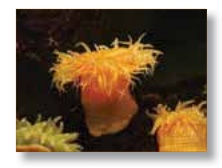Zoology - Kingdom Animalia: Important Questions | 11th Zoology : Chapter 2 : Kingdom Animalia
Chapter: 11th Zoology : Chapter 2 : Kingdom Animalia
Kingdom Animalia: Important Questions
Kingdom Animalia
Evaluation
1. The symmetry exhibited in
cnidarians is
a. Radial
b.
Bilateral
c.
Pentamerous radial
d.
Asymmetrical
2. Sea anemone belongs to phylum
a.
Protozoa
b.
Porifera
c. Coelenterata
d.
Echinodermata
3. The excretory cells that are
found in platyhelminthes are
a.
Protonephridia
b. Flame cells
c.
Solenocytes
d.
All of these
4. In which of the following
organisms, self fertilization is seen.
a.
Fish
b.
Round worm
c.
Earthworm
d. Liver fluke
5. Nephridia of Earthworms are
performing the same functions as
a.
Gills of prawn
b. Flame cells of Planaria
c.
Trachea of insects
d.
Nematoblasts of Hydra
6. Which of the following animals
has a true coelom ?
a. Ascaris
b.
Pheretima
c. Sycon
d. Taenia solium
7. Metameric segmentation is the
main feature of
a. Annelida
b.
Echinodermata
c.
Arthropoda
d.
Coelenterata
8. In Pheretima locomotion occurs
with help of
a.
circular muscles
b.
longitudinal muscles and setae
c. circular, longitudinal muscles
and setae
d.
parapodia
9. Which of the following have the
highest number of species in nature?
a. Insects
b.
Birds
c.
Angiosperms
d.
Fungi
10. Which of the following is a
crustacean?
a. Prawn
b.
Snail
c.
Sea anemone
d.
Hydra
11. The respiratory pigment in
cockroach is
a.
Haemoglobin
b.
Haemocyanin
c.
Oxyhaemoglobin
d.
Haemoerythrin
12. Exoskeleton of which phylum
consists of chitinous cuticle?
a.
Annelida
b.
porifera
c. Arthropoda
d.
Echinodermata
13. Lateral line sense organs occur
in
a.
Salamander
b.
Frog
c.
Water snake
d. Fish
14. The limbless amphibian is
a. Icthyophis
b.
Hyla
c.
Rana
d.
Salamander
15. Four chambered heart is present
in
a.
Lizard
b.
Snake
c.
Scorpion
d. Crocodile
16. Which of the following is not
correctly paired?
a.
Humans – Ureotelic
b.
Birds – Uricotelic
c.
Lizards – Uricotelic
d. Whale – Ammonotelic
17. Which of the following is an
egg laying mammal?
a. Delphinus
b. Macropus
c.
Ornithorhynchus
d. Equus
18. Pneumatic bones are seen in
a.
Mammalia
b. Aves
c.
Reptilia
d.
Sponges
19. Match the following columns and
select the correct option.
Column – I Column – II
(p) Pila (i) Devil fish
(q) Dentalium (ii) Chiton
(r) Chaetopleura (iii) Apple snail
(s) Octopus (iv) Tusk shell
a.
p – (ii), q – (i), r – (iii), s – (iv)
b. p – (iii), q – (iv), r – (ii), s
– (i)
c.
p – (ii), q – (iv), r – (i), s – (iii)
d.
p – (i), q – (ii), r – (iii), s – (iv)
20. In which of the following
phyla, the adult shows radial symmetry but the larva shows bilateral symmetry?
a.
Mollusca
b. Echinodermata
c.
Arthropoda
d.
Annelida
21. Which of the following is
correctly matched?
a. Physalia – Portugese man of war
b.
Pennatula – Sea fan
c.
Adamsia – Sea pen
d.
Gorgonia – Sea anemone
22.
Why are spongin and spicules important to a sponge?
23.
What are the four characteristics common to most animals?
24.
List the features that all vertebrates show at some point in their development.
25.
Compare closed and opened circulatory system
26.
Compare Schizocoelom with enterocoelom
27.
Identify the structure that the archenteron becomes in a developing animal.
28.
Observe the animal below and answer the following questions

a.
Identify the animal
b.
What type of symmetry does this animal exhibit?
c.
Is this animal Cephalized?
d.
How many germ layers does this animal have?
e.
How many openings does this animal’s digestive system have?
f.
Does this animal have neurons?
29.
Choose the term that does not belong in the following group and explain why it
does not belong?
Notochord,
cephalisation, dorsal nerve cord and radial symmetry
30.
Why flatworms are called acoelomates?
31.
What are flame cells?
32.
Concept Mapping - Use the following terms to create a concept map that shows
the major characteristic features of the phylum nematoda:
Round
worms, pseudocoelomates, digestive tract, cuticle, parasite, sexual dimorphism
33.
In which phyla is the larva trochopore found?
34.
Which of the chordate characteristics do tunicates retain as adults?
35.
List the characteristic features that distinguish cartilaginous fishes with
living jawless fishes
36.
List three features that characterise bony fishes.
37.
List the functions of air bladder in fishes.
38.
Write the characteristics that contributes to the success of reptiles on land.
39.
List the unique features of bird’s endoskeleton.
40.
Could the number of eggs or young ones produced by an oviparous and viviparous
female be equal? Why?
Glossary
Alternation of
generation – Alternation of haploid sexual and diploid asexual
generation in the life cycle of an animal.
Autonomy
– Breaking of a body part.
Dioecious
– Animals in which male and female reproductive organs occur in separate
individuals.
Hermaphrodite
– Animals with both male and female reproductive organs.
Mersentery
– A thin double walled epithelial membrane that support alimentary canal and
other organs in the abdominal cavity.
Regeneration
– Act of growing a new body part which has been injured or lost.
Related Topics